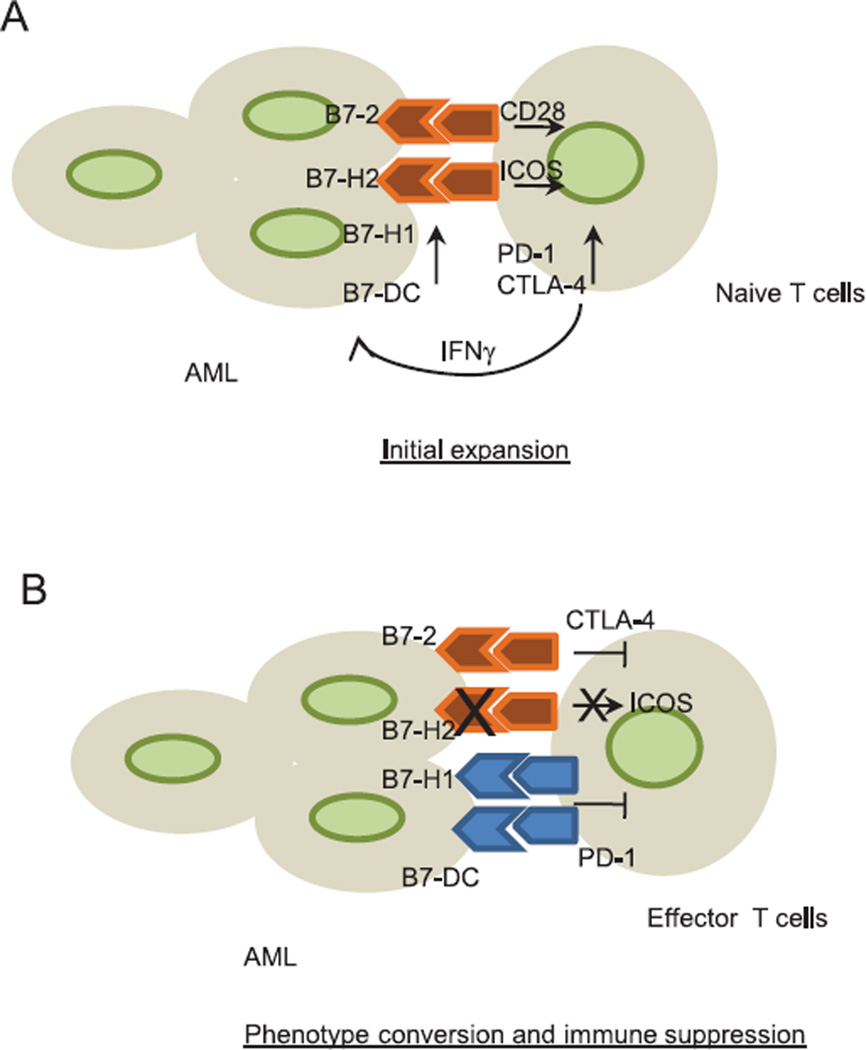Figure 1.
Adaptive immune resistance of acute myeloid leukemia (AML). (A) AML cells express costimulatory ligands B7-2 and B7-H2 and support an initial tumor specific T cell activation and expansion by engaging CD28 and ICOS on T cells. Activated T cells release an array of proinflammatory cytokines upon activation, including IFN-γ and TNF-α, which in turn upregulate B7-H1 and B7-DC on AML cells. Inhibitory receptors PD-1 and CTLA-4 are also induced upon T cell activation. (B) In response to the immune attack by activated T cell, AML cells quickly switch to an immune suppressive phenotype by downmodulating B7-H2 expression and upregulating PD-1 ligands, B7-H1 and B7-DC. The adaptive phenotypic change triggers T cell coinhibitory signal through PD-1 pathway to shut down T cell response.

